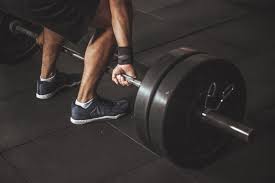Do you often feel sore after a workout? If so, you’re not alone. Many people experience muscle soreness after a tough workout. This is perfectly normal, and there are several things that you can do to relieve the pain and discomfort. In this blog post, we will discuss some of the best ways to relieve soreness after a workout. We will also provide some tips on how to prevent soreness from occurring in the first place.
What Is Soreness?

Soreness is a common side effect of intense exercise and physical activity. It is characterized by pain, stiffness, and tenderness in the muscles that have been worked hard during your workout.
While soreness can be uncomfortable and even a little painful, it is generally not caused by the alarm. For instance, it is a normal part of the muscle-building process, as your muscles are responding to new loads and stresses by repairing themselves and becoming stronger.
What Causes Soreness?

Several factors can contribute to soreness after a workout, including:
Lack of rest and recovery
If you are not giving your muscles enough time to rest and recover between workouts, this can lead to more intense muscle soreness. It is important to give your body adequate time between workouts so that it has a chance to build and repair the muscles that were worked during your previous session.
Inadequate nutrition
Your diet is also an important factor when it comes to soreness, as getting enough nutrients like protein, vitamin D, and magnesium can help support muscle growth and repair. If you aren’t getting enough of these essential nutrients in your diet, you may be more likely to experience soreness after a workout.
Excessive intensity
Finally, if you are pushing yourself too hard during your workouts, this can also lead to increased soreness. It is important to find a balance between challenging yourself and resting your muscles when they need it – overdoing it can cause greater levels of muscle soreness and stiffness.
Symptoms
There are various symptoms of muscle soreness. It includes:
Stiffness and tightness in the muscles
It is often accompanied by a dull, aching pain that can be felt anywhere in the body. you might feel soreness in your neck, back, shoulders, or legs. You may also experience tenderness and swelling in the affected muscles. This is often accompanied by redness and warmth in the area.
Weakness and difficulty with movement
Your muscles may feel weak and you may have trouble moving certain parts of your body. This can make it difficult to perform everyday tasks like walking or lifting objects. For example, you may experience soreness and stiffness in your joints, especially after periods of inactivity.
Pain sensitivity
You may find that even light touches or pressure on the affected areas cause a lot of pain. This can be very uncomfortable and make it difficult to go about your daily activities. You may also notice that certain parts of your body are swollen or inflamed. This is often due to fluid retention, which can lead to swelling in the hands, feet, ankles, and legs.
Increased muscle fatigue
During exercise or daily activities. If you are experiencing muscle soreness, your muscles may tire more easily than usual and you may feel more out of breath when performing routine tasks.
Reduced range of motion
Soreness is often the first symptom of an overuse injury. This soreness may range from mild to severe, and it can make it difficult to move your joints or perform certain activities. In severe cases, muscle soreness can limit your ability to move your muscles and joints freely. This can make it difficult to perform your regular activities or even get out of bed in the morning.
These symptoms are often signs of an overuse injury, and they can make it difficult to continue with your normal activities. It is a common symptom of exercise-induced muscle damage. This can make performing basic tasks like walking, bending, or lifting feel difficult and painful.
A general feeling of weakness and discomfort throughout the body can also be a sign of an overuse injury. In general, soreness tends to subside over several days as your muscles heal and become stronger.
If you notice these symptoms, it is important to take immediate action and seek treatment from a qualified healthcare professional. With the right care and treatment, you can recover from your injury faster, so that you can get back to doing the things you love.
There are many different strategies that you can use to help relieve soreness after a workout. Some of the most effective include:
Stretching
Stretching is one of the best ways to soothe sore muscles, as it helps increase blood flow and promotes healing. You can do gentle stretches after your workout, or try incorporating more dynamic stretching into your routine regularly.
Hydration
Staying well-hydrated is also important for reducing soreness after a workout. It increases the risk of injury when you are dehydrated, your muscles can become stiff and tight. Make sure to drink plenty of water throughout the day to keep your muscles supple and flexible.
Nutrition
Eating a balanced diet is another important factor in reducing soreness after a workout. Your diet should be rich in protein and other nutrients that can help repair damaged muscle tissue and promote faster recovery.
Using Ice pack
Ice packs are a great way to soothe soreness and reduce inflammation in your muscles. By applying an ice pack directly to the affected area, you can help ease the pain and discomfort associated with muscle soreness.
It is important to be careful when using ice packs, however, as prolonged exposure to cold temperatures can damage your skin and cause other medical complications. To prevent this, it is recommended that you use an ice pack for no more than 20-30 minutes at a time.
If your soreness persists or becomes more severe, be sure to consult with your doctor or healthcare provider. They can help you come up with a treatment plan that works best for your needs and condition.
Pain medication
Pain medication is often recommended to help manage the soreness and discomfort associated with exercise. There are many different types of pain medications available, including over-the-counter drugs like ibuprofen and acetaminophen, as well as prescription-strength options that can be obtained through your doctor.
It is important to always consult with your doctor before taking any new medications, especially if you have any underlying health conditions or are taking other medications. Many pain medications can have side effects, and it is important to be aware of these before you begin using them.
Therapy
To properly address your discomfort, a therapist may recommend a combination of physical therapy exercises, pain management techniques, and lifestyle changes. These strategies can help improve blood flow to the affected area and promote healing by increasing circulation, reducing inflammation, and strengthening your muscles.
Some of the most common physical therapy exercises for soreness include light aerobic exercises like walking or cycling, massage therapy, and targeted muscle-strengthening exercises. These activities can help increase flexibility and range of motion while also boosting circulation to reduce pain and swelling.
Massage
Getting a massage is another great way to ease soreness after a tough workout. Massage helps relax tight muscles and release tension, which can help reduce inflammation and promote faster recovery.
Lifestyle changes
In addition to these therapeutic techniques, you may also need to make some changes to your diet and lifestyle to reduce pain and discomfort. This might include limiting or avoiding foods that are high in inflammatory compounds, like sugar and refined carbohydrates, as well as getting adequate rest each night.
Ultimately, the best way to manage soreness from exercise is by listening to your body and giving yourself adequate rest and recovery time. If you are experiencing any significant pain or discomfort, it is important to consult with your doctor right away.
Overall, there are many different strategies that you can use to soothe sore muscles after a tough workout. Whether it’s through stretching, massage, hydration, or nutrition, you can find a way to manage your soreness and get back on track. So don’t be afraid to try different methods and experiment until you find what works best for you!
Conclusion
It may be concluded that soreness is a common symptom experienced by many athletes. This is due to the physical nature of their training regimens, which often involve high levels of intensity and stress on the body. However, several strategies can be adopted to reduce soreness and optimize recovery following workouts or competitions. These include regular stretching and foam rolling, as well as adequate nutrition and hydration. Additionally, it is important to listen to your body and take rest days when needed to allow your muscles time to recover fully. With proper care and attention, you can minimize soreness and maximize your performance!
So there you have it – the key strategies for reducing soreness and optimizing recovery as an athlete.
Physical Therapy help patients recover from pain. If you’re experiencing Back pain, Shoulder pain, Knee pain, Neck pain, Elbow pain, Hip pain, or Arthritis pain, a physical therapist at MantraCare can help: Book a physiotherapy session.


